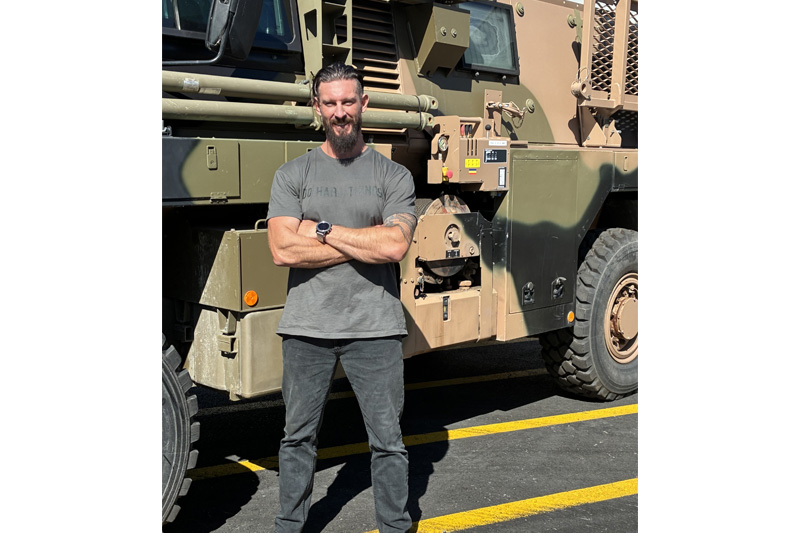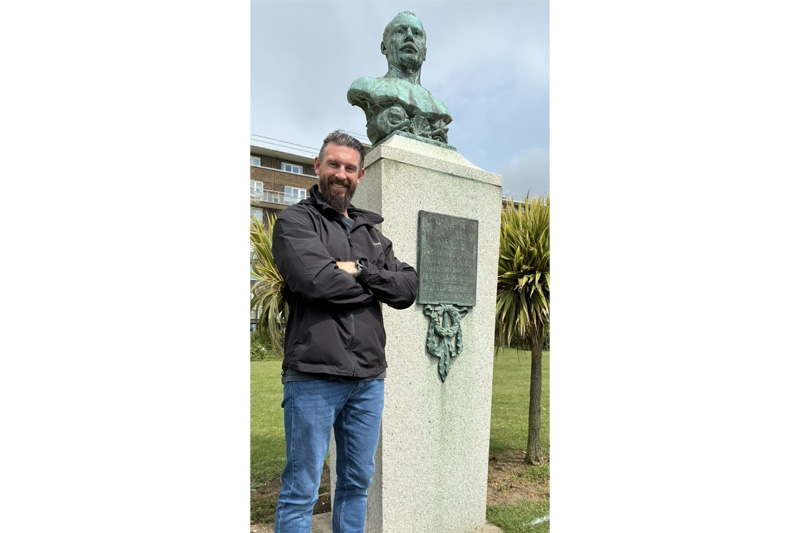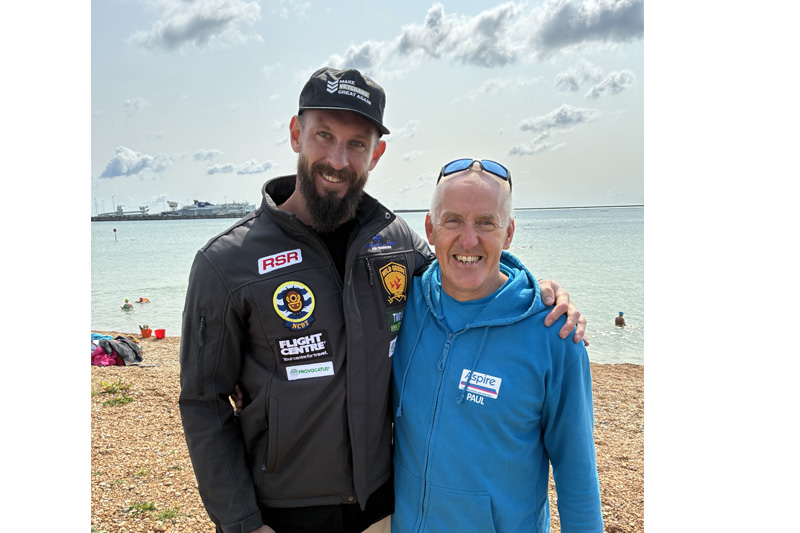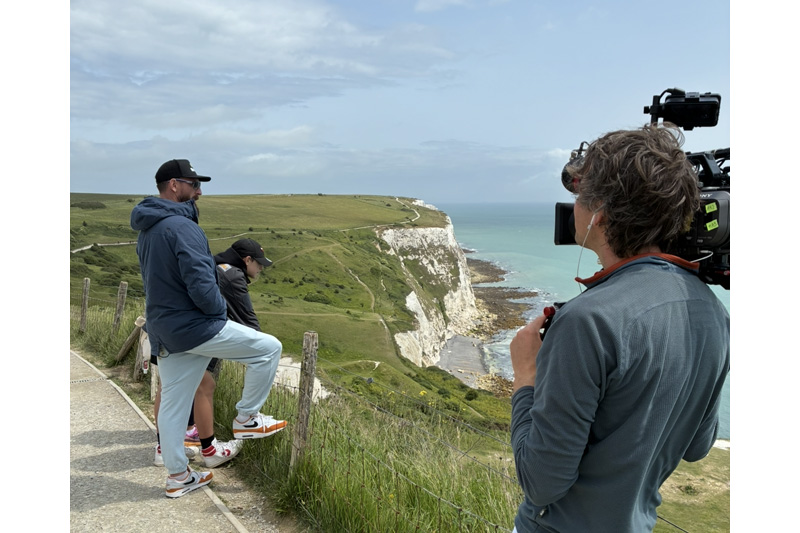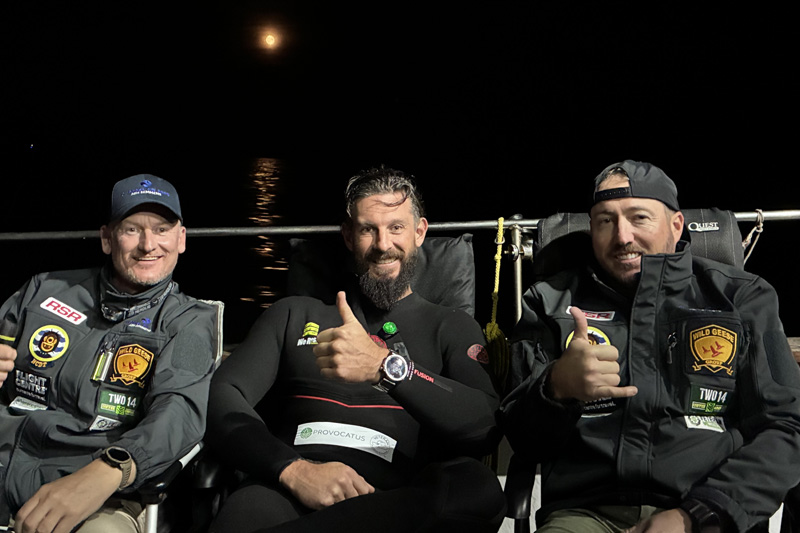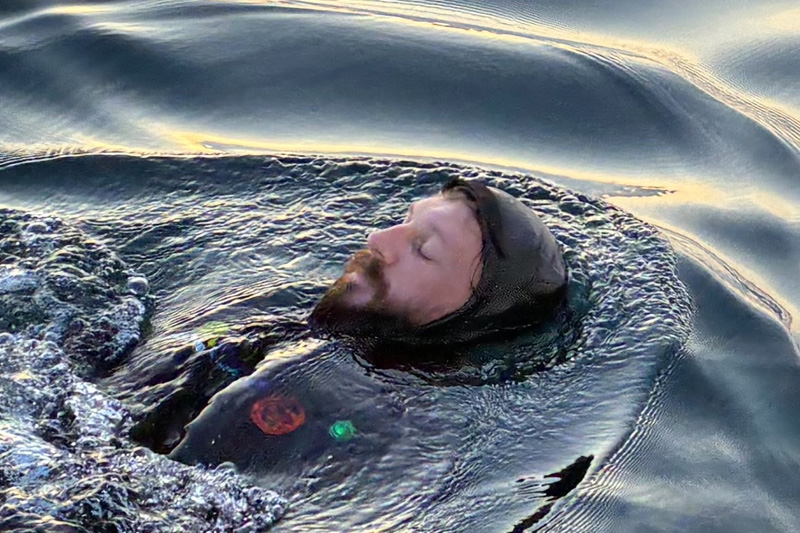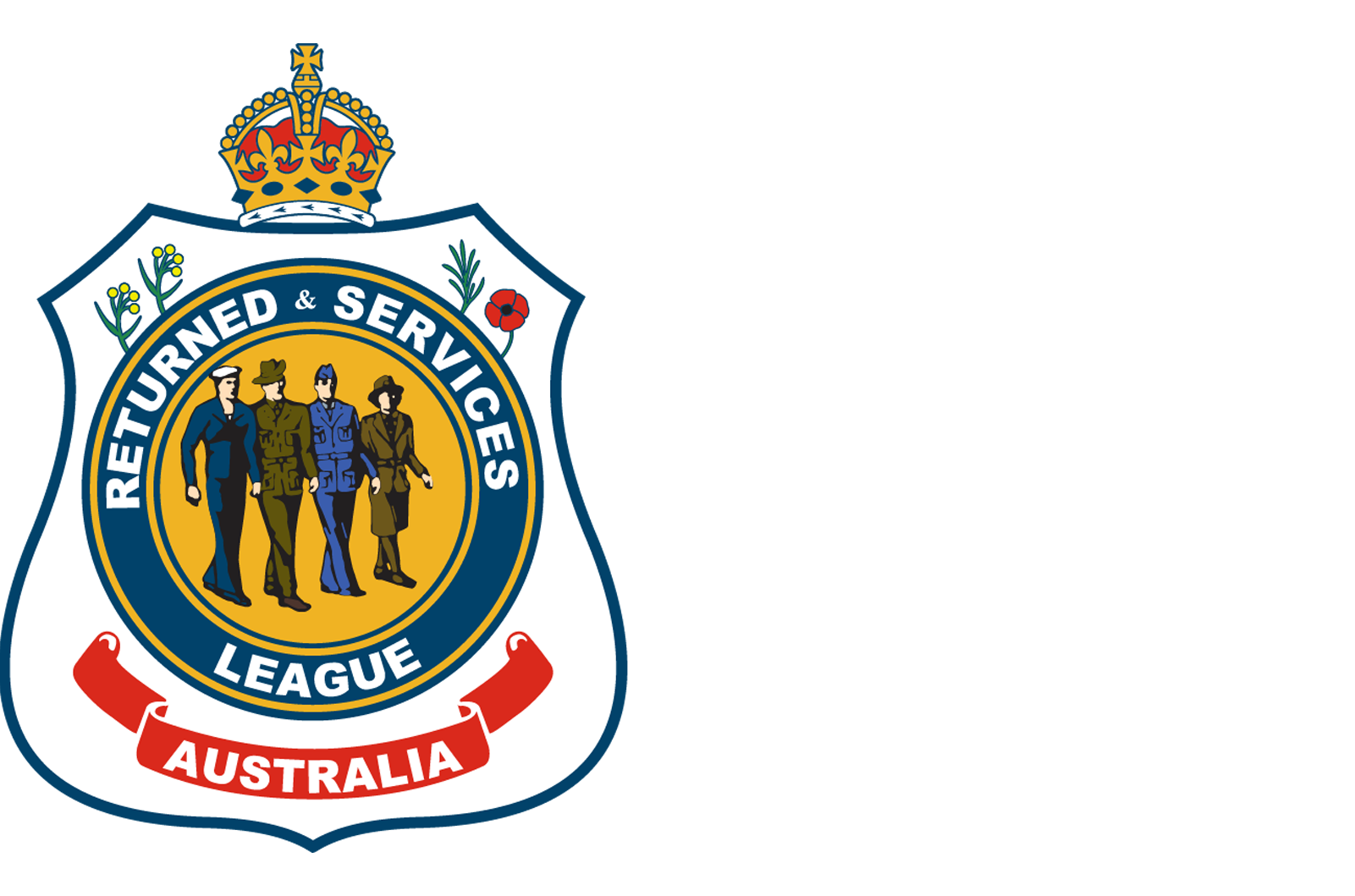22 September 2025
Against the tide
The English Channel is considered one of the ultimate endurance swims.
Spanning 32km or more, depending on the tides, it’s a gruelling physical and mental test through bracing temperatures and changeable conditions.
A few more than 3,100 people have succeeded, each finishing in seven to 27 hours. But only one has done so like veteran Navy Clearance Diver Ashley Semmens.
On 13 June, Ashley crossed the Channel backwards, using just his legs and fins – a clearance diver technique known as ‘finning’ – to support a cause close to his heart.
More to life
A member of Pine Rivers RSL Sub Branch, Ashley served in the Royal Australian Navy (RAN) for more than 18 years. He specialised in explosive ordnance disposal and deployed multiple times, including twice to Afghanistan.
However, several traumatic and life-threatening incidents took their toll on Ashley, leading to his medical discharge in 2021.
Ashley in front of the model of vehicle which saved his life in Afghanistan - the Aussie Bushmaster made by Australian company Thales. Photo by Ian Eckersley, Evolve Media
After a long mental health battle, he reached a turning point.
“I got to a really dark point in my life where I couldn't see a future,” Ashley shares.
“I sat with that thought and said, ‘Well, this is up to me. There's only one person that can make this better, and there's more to life than just me’. Once I realised that, it inspired me to help others.”
Supporting the clearance diving community
The not-for-profit Navy Clearance Diver Trust (NCDT) supports current and ex-serving RAN clearance divers and their dependants.
The NCDT aims to prevent and relieve hardship resulting from injury, health impacts or loss of life, providing financial assistance, scholarships and professional career coaching.
Ashley joined the NCDT in 2023, volunteering as its Clearance Diving Liaison Officer.
“I saw that as a way to give back to the community I’d left, still serve others and help improve their situations,” he says.
“At the time, there were no serving members that were part of the trust. I was able to move in and be a conduit between the two.
“A lot of veterans – particularly in smaller, more niche job profiles – don't like asking for help and won't go to strangers for help.
“Being a familiar face, I’m an easier point of entry for them to call and chat to if they need help, compared to someone they don’t know or can't relate to. It's been very rewarding.”
Ashley in front of the statue of the first man to swim the English Channel - Captain Matthew Webb - an English seaman and swimmer who swam the channel exactly 150 years ago in 1875. Photo by Ian Eckersley, Evolve Media
Reclaiming purpose
Seeing current and ex-serving friends facing similar struggles to his own, Ashley found a new sense of purpose: "to show that if you put your mind to it, you can sort of heal yourself and go back to a normal, productive life post-service”.
From there, he set himself the ultimate charity challenge: becoming the first person to fin the English Channel in tribute to and support of his comrades.
“It had to be something big and it had to be something that relates to service – to say we can still do challenging things and do things that help others,” he says.
“It doesn't have to be in a Defence role. There are lots of ways that we can help, whether it's your community, or society in general.”
Ashley dedicated 18 months to training, swimming 3km or more around 10 times a week to prepare for the feat.
Ashley Semmens with fellow English Channel swimmer Paul Parrish. Photo by Ian Eckersley, Evolve Media
“The physical part of it was actually the easy part, to be honest. The mental side was the hard part – finding that motivation each day,” he says.
“And once you've bitten off something, there's a little bit of imposter syndrome and all those sorts of things that come into play.”
His six-hour qualifying swim in Melbourne was particularly challenging.
“I did 18km in Port Phillip Bay, in below 16°C water. So, it was pretty fresh. They have a fair bit of marine life out there too, which is always a concern for me.
“I've had a fairly challenging time, particularly with sharks, after one of my close friends got attacked while I was in the military. So, that's something that always plays in the back of my mind.”
Trial by water
When Ashley and his support crew finally assembled in Dover, England for the crossing attempt, an anxious waiting game began.
“I had a nine-day window of opportunity to find the best available weather. Over those nine days, we didn't get a single break in the weather,” he says.
“At the end I had to buy myself two more days. I extended my accommodation, the safety vessel and all those things, just in the hope that we would get a break in the weather, which finally came at midnight on the very last night.
“It couldn't have been any closer to failure, really. It came right down to the last second. The boat pilot said, ‘We can go now. If it's an hour or two later, we're going to have to cancel everything’.
“And then the weather that I got was beautiful. I couldn't have asked for anything better: sunny day, seals and dolphins, glassy water, no wind. It was scripted perfectly.”
Despite the fair weather, and the upbeat mood among the crew, the start of Ashley’s fin was “a real emotional rollercoaster”.
“I was in a really dark place at that time. I was really struggling with it all. Because I was so low in the water, I could see the Cliffs of Dover and it looked like I was going nowhere,” he says.
Ashley and family above the white cliffs of Dover, where he started his swim. A documentary about the swim - Against the Tide - is being produced. Photo by Ian Eckersley, Evolve Media
“That really reinforced these negative thoughts in my head to the point where I was very close to calling it a day.”
Some words from one of his support crew – an Army veteran who served with Ashley in Afghanistan – helped spur him on.
“He was able to pull me out of that rut, remind me what my purpose was and get me back on the straight and narrow,” Ashley says.
“And then it kind of became enjoyable. I mean, I was battling leg cramps and stuff the entire time, so that was an ongoing challenge, but I knew how to handle it.”
Some 10 hours in, Ashley caught a glimpse of France. The end was in sight.
Then, with just 2km left to go, the tides changed, pushing him backwards 5km.
“I was really at my physical limit at that stage. My quads and hamstrings were really cramping up, so it was really tough to realise I’d now got to the hardest part. I had to dig deep to get through that,” he says.
“But again, it became a lot easier once I remembered why I was there. At that point, it was simple. I just had to get to the beach. It was just a matter of putting my mind to it and getting through those physical barriers.”
After finning non-stop for 11 hours, 49 minutes and 39km, Ashley successfully crossed the Channel, landing on French soil at the Bay of Wissant – sore, tired, but mostly relieved.
“There was a lot of emotion because it had been such a long lead-up and I'd been very public about it, so I felt quite a lot of pressure,” Ashley reflects.
“I didn't know whether I would make it, or whether I'd even get a chance with the weather, so to get to the end meant a lot.
“With everything that got thrown in front of me, I just found a way to get around it and make it happen. And that's kind of the message from the whole thing: find your purpose and whatever it takes, make it happen.”
Ashley Semmens with support crew - Adam Howard (left) and Cory Stamp (right). Photo by Ian Eckersley, Evolve Media
Making waves
Ashley’s efforts managed to raise more than $150,000, which will go directly towards the NCDT’s support programs to help clearance divers post-service.
“I thought, if we raise $10,000, then that's really nice. But to be where we are now, I'm over the moon,” Ashley says.
He’s also heartened by the personal impact his example has made.
“It's been really nice to see that it has inspired others,” he says.
“I’ve received messages saying, ‘You were the first, but I'm going to be the second person to fin across’, or ‘I'm entering the 42K fun run’.
Photo by Ian Eckersley, Evolve Media
“It's gone far beyond just the veteran community. It makes it so rewarding to know that it’s helped, whether it's just one or two people.”
A documentary about Ashley’s journey is now in production, with the film – titled Against the Tide: The Ashley Semmens Story – to trace his life from childhood to Defence, his challenges afterwards, and ultimately his charity fin.
He hopes his story shows others that “healing is possible, and we can heal ourselves”.
If you or someone you know needs urgent support, please call Open Arms on 1800 011 046 or Lifeline on 13 11 14.
A wide range of support services is also available from RSL Queensland.

